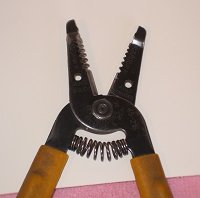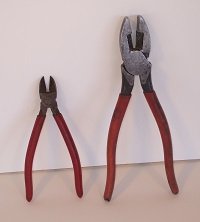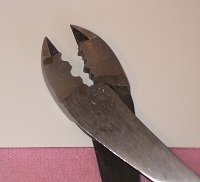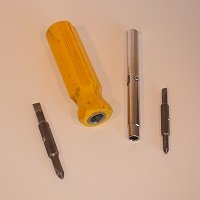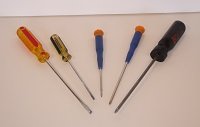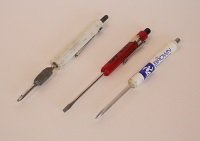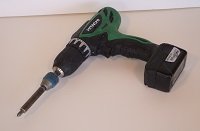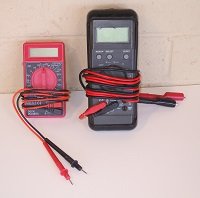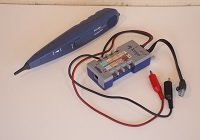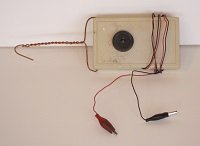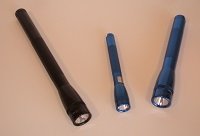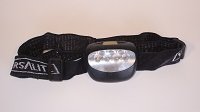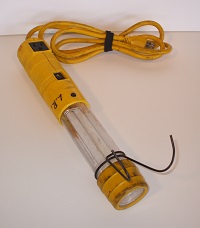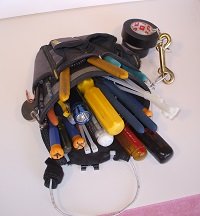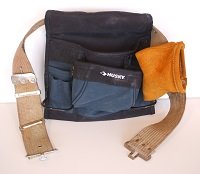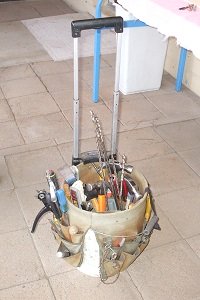- Home
- Compare Systems
- Cheap Systems
- Free Quotes
- DIY Systems
- Hardwired Systems
- Wireless Systems
- Smoke Detectors
- Medical Alarms
- Alarm Monitoring
- Cameras & Video
- Ademco
- ADT Security
- Brinks Security
- Broadview
- DSC Security
- FBI Alarms
- GE Security
- Honeywell
- Link Interactive
- Monitronics
- Moose
- Napco
- Protection 1
- Radionics
- Simplisafe
- Alarm Manuals
- Alarm System Parts
- Alarm Tools
- Troubleshooting
- FAQ
- Glossary
- Sitemap
- About Me
- Contact Me
Alarm Installation Tools
For Technicians and DIYers
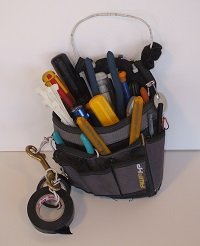
As with any trade, alarm installation tools can be as individual as the people who use them. All alarm technicians and do-it-yourselfers will have certain tools they prefer, and I’m no exception.
Below is a list of the tools that I’ve found to be the most useful, along with the features that make them ideal for alarm installation and service work.
This list is not meant to be comprehensive; rather, these are the items I’ve needed most often, and the ones I always try to have handy while at work.
Of course, you should pick and choose alarm
installation tools based on your situation. For example, if you just
need to install a smoke detector or replace a magnetic contact, you may
not need anything but a screwdriver and a pair of wirestrippers. On the
other hand, if you’re installing a complete home security system, more
tools will be needed, depending on the specific type of work you’re
planning to do.
- If you’re a do-it-yourselfer installing your own home security system, you can probably get the job done with tools you already have around the house, or can obtain fairly easily. A good pair of wire strippers and cutters, a few screwdrivers, and a cordless drill for driving screws and drilling pilot holes is probably enough. This is especially true if you are planning a wireless home security system.
- If you’re planning on installing a wired home security system, or if you are an alarm technician, you’ll want many of these tools and probably several others.
Alarm Installation Tools by Type
Basic alarm installation and service tools tend to be many of
the same tools used for 110-volt electrical and low-voltage work: Wire
cutters, strippers, and crimpers, screwdrivers, test equipment, various
flashlights, and a tool pouch, box, or bucket to carry everything.
For
the most part, all of these are hand tools. I’ve included cordless
screwdrivers and drill/drivers here, even though they are technically
“power” tools, because I tend think of them and treat them as “hand”
tools.
Wire Stripper Tools,
Cutters, and Crimpers
Wire Stripper Tools
Wire strippers, along with cutters and crimpers, are probably
used more often than any other alarm installation tools. They are needed
to remove jacketing and/or insulation to expose bare copper wire before
most electrical connections can be made. Most wire stripper tools can
handle several sizes/gauge of wire, and most also double as a wire
cutter.
I’ve tried a few of the “automatic” wire strippers, and they do work OK for certain sizes of wire. Overall though, I’ve found them to be “clunky”. Most won’t remove the outer jacket from multi conductor cables, so I would need a separate stripper for that chore anyway. And, the automatics don’t work with all kinds of wire, so I’ve never found one I really like.
I do like wire stripper
tools with a built-in wire-bending or looping hole, for those times when you need to
bend heavier wire to fit around a screw terminal. Cushioned handles
also make them more comfortable to use if you have many wires to cut or
strip.
Wire Cutters
Wire cutters probably aren’t necessary if you
have a pair of wire stripper/cutters. A separate cutter is
needed if you deal with coaxial cable, fish tapes, or any wire harder
than copper.
Diagonal cutters are best for cutting coaxial cables and anything else you don't want to abuse your good wire strippers on. Lineman's pliers are the greatest for cutting steel fish tapes.
Terminal Crimping Tools
A terminal crimping
tool is used most in alarm work for crimping the popular Dolphin-style
“B” wire connector. Most dedicated crimping tools will also handle
crimp-on terminals, of course, and can be pressed into service as pliers
and nipping cutters when needed.
Although my regular wire stripper/cutter also has a pliers-like tip that could crimp B-connectors, I have always carried a dedicated crimper for this task. The positive crimping action they give, as well as the ability to uncrimp connectors, is worth the extra trouble of carrying them.
More details on how to use wire stripper tools, cutters, and crimpers for alarm installation.
All in One Screwdriver
Screwdrivers are probably the second-most-often-used alarm installation
tools after wire strippers, cutters, and crimpers. Screws are used as
fasteners everywhere in home security work, and you need the right
screwdrivers to deal with them.
All-in-One Screwdrivers
My
go-to driver for general use is special kind of all-in-one screwdriver,
the 6-in-1 screwdriver. It’s so named because it offers 6 functions:
- Large flat blade screwdriver
- Small flat blade screwdriver
- Large Phillips screwdriver
- Small Phillips screwdriver
- Nut driver, ¼”
- Nut driver, 5/16”
Also known as combination screwdrivers, all-in-one screwdrivers are great for most routine chores:
- Mounting and removing of alarm panels, keypads, motion detectors, and other devices
- Accessing J-boxes and cover plates
- Making connections to telephone jacks and RJ-31X modules
- Connecting field wiring to alarm panel terminals
Specialty Screwdrivers
The
6 in 1 is good, but these days alarm panels and many other devices have
gone to smaller terminal strips, which of course, have smaller screws.
DSC panels have used small terminal screws for years, and wireless
transmitters that can connect to hardwired contacts typically have tiny
straight-blade or Phillips screw terminals.
These require the use
of smaller, specialty screwdrivers. Luckily, these days there are many
screwdriver sets available with enough sizes of screwdrivers to fit any
job.
You’ll acquire the screwdrivers you need as you work with different fasteners, and some will become go-to favorites.
Pocket Screwdriver with Magnet
One
type of screwdriver I’ve found especially helpful is the pocket
screwdriver with magnet. Though small in size, it can turn a wider
variety of screws than you might think, and the magnet is extremely
helpful in troubleshooting alarm contacts on doors and windows.
Cordless Screwdrivers
Battery
powered screwdrivers are now available in smaller packages and have
more power than ever. Choosing one with lithium-ion batteries, like my
Hitachi cordless screwdriver, will virtually guarantee that you’ll have a
fully-charged drill/driver at hand whenever you need it.
Read more details on using an All in One Screwdriver and Other Useful Screwdrivers.
Test & Measurement Equipment
Digital Multimeter
A digital multimeter, or DMM, is probably the single most
important piece of test equipment you can own. Although DMM’s are not
always thought of as “alarm installation tools”, they can help shorten
installation times when things don’t go quite as planned. From verifying
continuity to checking voltages on batteries and alarm panel terminals,
you can use a digital multimeter as more than just a “test” instrument.
I
recommend investing in the best meter you can comfortably afford,
preferably from an established brand like Fluke.
Next, upgrade it with a set of
aftermarket test leads. This combination will give you a very flexible
and easy-to-use measurement tool that can last for decades with a little
care.
Tone and Probe Kit
A tone and probe kit probably isn’t a necessity for a
DIYer or weekend alarm hobbyist, but it’s a must-have for alarm
professionals.
The
tone generator portion connects to one end of a wire, and transmits a
signal along its entire length. The probe is an inductive amplifier that
picks up the signal, and emits it as an audible tone through a speaker.
This allows you to trace the path of a wire through walls, floors, and
ceilings.
A cut wire can lead to many wasted hours without a tone
and probe set, and you’ll likely make up the cost of the tool the first
time you need to locate a cut or damaged wire.
Learn everything you need to know about using a Tone and Probe Kit to find a cut wire.
Continuity Tester
A continuity tester is so useful, yet I’m always amazed
that more alarm technicians don’t have or use one. When labeling wires
during an installation, for example, testing for continuity is so much faster and error-free than trying to use a tone and probe kit or
digital multimeter.
Cost
should definitely not stand in the way of owning a continuity
tester. While a Fluke digital multimeter or tone and probe set might
easily run $100 or more, you can make your own continuity testing
circuit for under $10. All that’s needed are a battery holder, a
sounding device, and a pair of wire leads.
Learn more about Using a Continuity Tester for Alarm Installation and Service
Flashlights
Maglite LED Flashlight and Other Small Flashlights
Good portable lights are important alarm installation tools, and I appreciate them more and more with every passing year!
The MagLite LED flashlight has become sort of a model for the
personal-carry flashlight, and with good reason. They are very
well-built, reliable, and give off plenty of light. My tool pouch is
never without one!
Maglite hands free flashlight accessories make
the basic light very versatile. Belt cases, headbands, sleeves with
legs, and other slip-on devices allow you to carry and use your Maglite
for working in nearly any situation.
Hands Free Flashlight
Small task lights of all shapes and sizes can provide a little (or a lot) more light than a MagLite. The best LED flashlights of this type have both a hook and a magnet. These allow hanging the light nearby, or sticking it to the metal cabinet of an alarm panel.
Harbor
Freight sells several styles of these lights, at very low prices. While
not very ruggedly built, they work well enough, and I keep a couple
around at all times. When they eventually fail through abuse, being
dropped, or just getting worn out, they’re such cheap flashlights that I
don’t feel bad about replacing them.
As mentioned before, several
aftermarket headband-type accessories will turn your MagLite into a
headlamp. Aside from these, many dedicated headlamps are available that
work better and will last longer. I’ve used a 4-LED unit of unknown
manufacture for years, and it has yet to let me down.
Corded Utility Lights
Corded utility lights powered by 110-volts AC are the best way to light up areas for long-term projects like installing or rewiring an entire panel or other extensive projects. I see no sense in wasting batteries for these situations, and the added light output you’ll get makes the work less of a strain on your vision.
I’ve
had a corded fluorescent drop-light for years that is perfect for this
type of work. It has a metal wire hanger, which is handy for getting it
into place. My favorite feature, though, is the built-in receptacle that
i can use to plug in a corded power tool or even an electric fan to
help keep me cool while I work.
I own and use a few halogen
utility lights, and they are probably the brightest lamps available. The
problem is that they generate so much heat, working near one in a
confined area gets really uncomfortable. If I can get away with the
slightly lower light output of a fluorescent lamp, that’s what I’ll use.
Myriad
other corded lights abound, both fluorescent and LED, and personal
preference will be your guide to choosing what works best for the
projects you do.
Read more details on the MagLite LED Flashlight and Other Small Flashlights.
Electrician Tool Pouch and Other Tool Carriers
After collecting all of your wonderful alarm installation tools, you need something to carry them in, right?
Over the years, I’ve tried many different tool pouches and holders, and I’ve settled on two simple set ups.
Electrician Tool Pouch
My
“daily carry” tool bag is an electrician tool pouch with belt clip.
Having a clip, rather than a fixed loop, makes it easy to put on and
take off many times throughout the day.
Belt with Leather Tool Pouches
For more involved jobs requiring larger tools, I use a web belt with
one or more leather tool pouches. This setup can hold a lot more items
than my small tool pouch, including my Hitachi cordless drill/driver.
Having
the belt makes it easy to add on different types of tool belt pouches
to suit the job at hand. I can add on a nail bag to hold fasteners, a
tool bag for hand tools, and a hammer loop for, well, a hammer.
I
don’t use this setup very often, so I don’t care that the bags end up
in different spots on the belt each time I put it together. It’s not as
quick to grab a desired tool as it is from my small tool pouch, but it
carries everything I need nicely.
Tool Bags and Buckets
I have several tool bags of various sizes, and a few 5-gallon buckets. I shuffle tools, fasteners, and other supplies between them, based on what project I’m doing.
I have a few 5-gallon buckets for
carrying around stuff that won’t fit in my tool pouches. One has a
Bucket Boss organizer inside, and is attached to a rolling carrier with
extendable handle. As I usually do, this thing is loaded full with way
more tools than I can comfortably lift. It stays on the work truck 99%
of the time, and I just pull whatever tools I need out of it.
A second bucket holds the tools I need for the job at hand, and the tools are rotated in and out of it as needed. The tools end up in a random jumble in the bucket, but they’re fairly easy to find since the bucket is open.
I keep a third bucket that carries several drop cloths, and it also doubles as a seat.
Buckets aren’t fancy, but they’re cheap, strong, widely available, and do the job well for me.
See more about how to use an Electrician Tool Pouch And Other Tool Bags and Buckets for alarm work.
Not sure you have the skills needed to install an alarm system yourself?
Or, do you have plenty of skills, but not enough time?
I understand completely. These are two of the reasons I’ve partnered with BuyerZone. Using their connections with alarm dealers across the country, you can quickly get free alarm quotes from companies in your area.
Just answer a few easy questions below, and you’ll receive your free price quotes shortly.
Try it now!
Related Articles:
DIY Home Security Systems
Hardwired Home Security Systems
Wireless Home Alarm Systems
Burglar Alarm System Troubleshooting
Alarm System Parts
Return to Home Security Systems Answers from Alarm Installation Tools
Note: Feel free to print any of the articles on this site for personal, non-commercial use. Just look for this button:
If you found this website especially helpful, you might want to consider making a small donation. Since 2011, AzAlarmGuy has been providing free help and advice on home security systems to all of those in need.
Your gift, in any amount, will help me keep this website a free resource for anyone needing help with alarm system issues or questions.
Disclosure
I receive affiliate commissions from some of the companies and products I discuss. These commissions don't change the price that you pay.
Rest assured that this compensation does not influence my recommendations. I only endorse products and services that I truly believe to be an honest value for you, as a visitor to my site.
For more details, see my full disclaimer.
